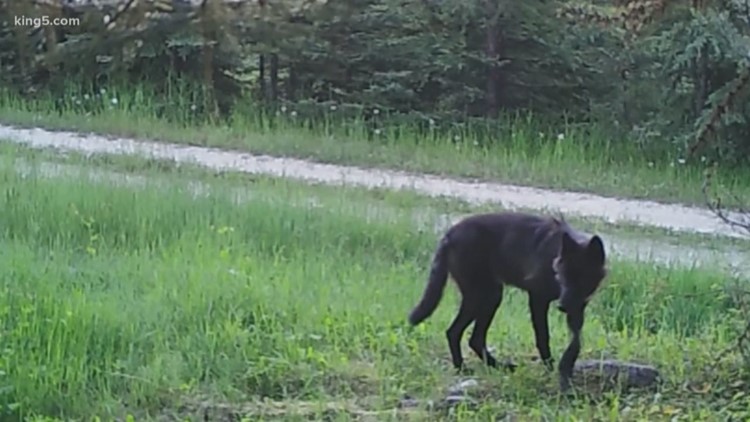It would appear that according to this article and Martorellos statement that livestock and wolves are only in conflict 12% of the time. If that is the case, then why is 1 Rancher Len McIrvin from the Diamond M Ranch responsible for slaughtering 12- 15% of Washington States total population. Martorello has already proven that he doesnt keep commitments on his part. They refuse to put a Voice on their Wolf Advisory Group that won’t parrot what they want or roll over. Seeing images from recent articles which we will post, raise questions if these WDFW officials actually know what it is they are looking at.
There are more wolves in Washington state than officials originally estimated. A lot more.
In the most recent estimate from 2018, officials counted 24 packs. The state reports a growth rate of 30 percent per year. Sometimes it’s less; last year’s growth rate was just six percent.
Wolf researchers and policy leads presented the findings to the state Senate Agriculture, Water, Natural Resources and Parks Committee on Tuesday.
The eastern third of the state was federally delisted because of wolf population growth, which allows the state to take lethal action when there is a conflict with livestock. The remaining two-thirds of the state are listed under Endangered Species Act protection. In those areas, no one is allowed to kill wolves.
There are several benchmark goals at which point the state can initiate the delisting process. According to the Washington Department of Fish and Wildlife’s website: “The recovery goals call for de-listing wolves when 15 successful breeding pairs are present for at least three years, with at least four in Eastern Washington, four in the Northern Cascades, four in the Southern Cascades and Northwest Coast, and three anywhere in the state. The de-listing process could also occur if 18 successful breeding pairs are documented in a single year with at least four pairs in each recovery region.”
Wolves continue to migrate in and out of Washington, changing the population numbers regularly.
“Wolves can travel a great distance, hundreds of miles,” said WDFW Wolf Policy Lead Donny Martorello.
A couple of years ago, research teams with the University of Washington Center for Conservation Biology started using dogs rescued from shelters, who find scat from wildlife. The dogs have allowed them to monitor predators across the state from cougars to coyotes and wolves to black bears. Unlike limited monitoring of collared wolves, the dogs cover the entire population of animals and can get a wide variety of information like diet, sex, identity, stress, reproductive hormones, and pregnancy rates.
“We have a well-known project in the San Juan Islands on killer whales where the dogs are actually detecting floating scat,” Dr. Sam Wasser said. “One of the phenomenal benefits of these dogs is outreach. These dogs are absolutely public magnets. People just love them.”
The team has collected 8,000 scat samples.
“We analyzed over 6,000 of those samples and we got 541 samples from wolves in year one and 285 in year two,” said Wasser.
Of the samples collected in the eastern third of the state, scientists identified 60 unique wolves in the first year with a population estimate of 68 individuals. In the second year, they collected 92 unique wolf scat samples with a population estimate of 95 wolves. The data shows the state has far more wolves than previously estimated.
However, Wasser said there could be at least 200 wolves, because they don’t know how many of the wolves leaving scat samples were permanent or passing through.
Chase Gunnell, spokesperson for Conservation Northwest, was excited by the survey results, saying that they showed wolf recovery was progressing well.
“We hope to soon see wolves confirmed in Washington’s South Cascades as well as new areas of the North Cascades where reported sightings have become more common in recent years,” Gunnell said.
Some wolf packs are thriving better than others. Dirty Shirt is greatly expanding, Wasser said, but the Goodman Meadows pack has much fewer survivors.
Wolves are also competing with other predators for space and food. Researchers found that wolves eat mostly deer, secondly moose, and lastly elk.
“The areas that we tend to see the highest wolf densities tend to be lesser coyote density areas,” Wasser said.
RELATED: Washington ranchers struggle to keep cattle safe in wolf territory
Unlike protected areas like Yellowstone, Wasser warned that Washington presents a different recovery situation because of interaction with human activity. That’s why, he told legislators, the wolves must be closely studied to monitor what kind of effects they’re creating.
A typical-sized wolf pack will kill a deer-sized animal every few days, researchers said. A larger pack will kill more frequently but they’re more efficient than cougars so they kill fewer pounds per wolf than a cougar, which kills one deer a week.
About 80 percent of the time nationwide, wolves and livestock co-exist without problems while the other 20 percent is spent in conflict. In Washington, the two are in conflict just 12 percent of the time. In the last decade, the state has killed several wolf packs after repeated attacks on livestock, mostly in the northeast corner of the state.
“Wolf management is a very polarized issue,” Martorello said.
In 2015, the state hired a contractor for mediation among diverse stakeholder groups to help develop relationships that would allow for effective work on what Martorello called “difficult issues.”
RELATED: Conservation groups divide over killing of Washington wolves
Source: Wolves making faster comeback than expected in Washington state | king5.com
